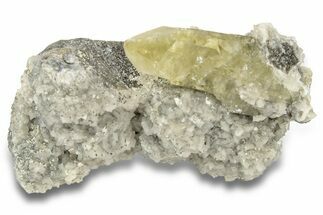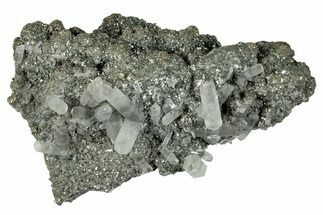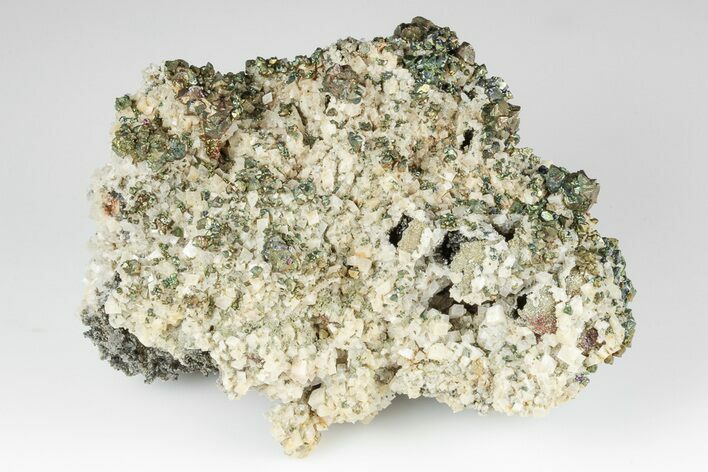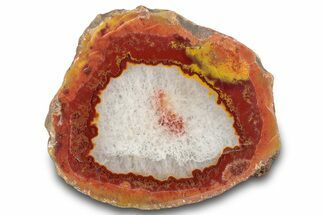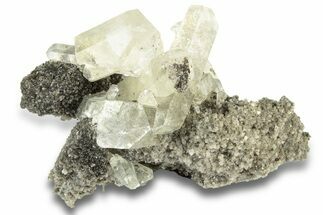This Specimen has been sold.
3.9" Sparkling, Iridescent Chalcopyrite on Dolomite - Missouri
This is a gorgeous, 3.9" wide specimen that contains iridescent chalcopyrite crystals that formed from a dolomite crystal encrusted matrix. This mineral cluster was collected from Reynolds County, Missouri, an area containing several mines that produce a variety of beautiful mineral associations.
What Is Chalcopyrite?
Chalcopyrite is a brass-yellow colored mineral and an important copper ore. When weathered, chalcopyrite loses its metallic luster, turning a gray-green color. When exposed to acids, the tarnish can develop a red, blue, or purple iridescence: this acid-treated material is often sold under the name peacock ore.
Chalcopyrite is a brass-yellow colored mineral and an important copper ore. When weathered, chalcopyrite loses its metallic luster, turning a gray-green color. When exposed to acids, the tarnish can develop a red, blue, or purple iridescence: this acid-treated material is often sold under the name peacock ore.
Dolomite is an anhydrous carbonate mineral composed of calcium magnesium carbonate (CaMg(CO3)2).
The mineral dolomite crystallizes in the trigonal-rhombohedral system. It forms white, tan, gray, or pink crystals. Dolomite is a double carbonate, having an alternating structural arrangement of calcium and magnesium ions. It does not rapidly dissolve in dilute hydrochloric acid as calcite does. Crystal twinning is common.
Dolomite was first described by Carl Linnaeus in 1768, and in 1791 it was described as a rock by the French naturalist and geologist Déodat Gratet de Dolomieu. He first recognized the material in buildings of the old city of Rome, and later as samples collected in the mountains known as the Dolomite Alps of northern Italy.
The mineral dolomite crystallizes in the trigonal-rhombohedral system. It forms white, tan, gray, or pink crystals. Dolomite is a double carbonate, having an alternating structural arrangement of calcium and magnesium ions. It does not rapidly dissolve in dilute hydrochloric acid as calcite does. Crystal twinning is common.
Dolomite was first described by Carl Linnaeus in 1768, and in 1791 it was described as a rock by the French naturalist and geologist Déodat Gratet de Dolomieu. He first recognized the material in buildings of the old city of Rome, and later as samples collected in the mountains known as the Dolomite Alps of northern Italy.
SPECIES
Chalcopyrite & Dolomite
LOCATION
Viburnum Trend, Reynolds County, Missouri
SIZE
Entire specimen: 3.9 x 2.6"
CATEGORY
ITEM
#193781
 Reviews
Reviews
